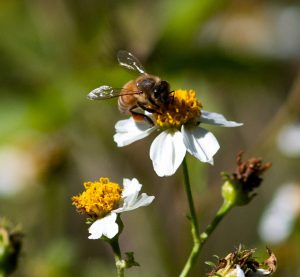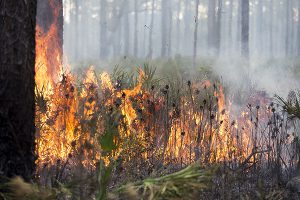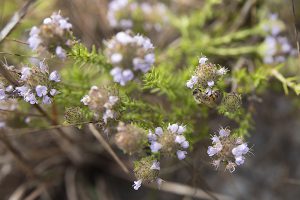Many people know that bees are the “essential workers” that keep plants in our yards, gardens, and farms healthy, beautiful, and productive. But what about bees in the wild? A new Ask IFAS publication (“Bees and Fire: How does Fire in Longleaf Pine Savannas Affect Bee Communities?“) answers the bee questions you didn’t know you had.
Bees and people
If you know much about bees, you probably know that they rely on nectar and pollen from a wide range of flowers for food. You might even have deliberately left some native flowering species that bees like in your yard or garden, just to keep the bees and other pollinators in your locale happy and healthy.

Most people know that farmers rely on bees and that we need them and other pollinators to raise many of our crops. Some of our favorite foods, including oranges, strawberries, avocados, and pumpkins would disappear from our plates if it weren’t for pollination provided by bees.

Bees in the wild
You might not have thought as much about bees and pollination in wild places. Just as farms get a boost from bees, so do natural ecosystems. In fact, 80% of the plants in longleaf pine forests need bees and other pollinators to produce seeds.
Along with the plants and trees in the forests they live in, bees have adapted to fire. And just like the plants, bees and bee colonies rely on regular burns to keep healthy. Who knew!?

But… doesn’t fire burn the bees?
Actually, no! Most native bees stay safe in their underground nests, so the fire doesn’t harm them. And remember, bees are adapted to fire, so they are pretty savvy: if they note that an area is in flames, they will travel to somewhere not on fire to forage for food.
About that! Won’t all the flowers burn away?
A well-controlled fire leaves bees plenty of untorched habitat with flowers for food. Best of all, burned areas get much more sunlight, which means they will produce much more bee food. Shortly after a fire, the forest floor bursts into riotous flower and becomes a delicious smorgasbord for all kinds of bees.

More bee lore
Find this Bees and Fire publication and many other bee-fact-packed resources at Ask IFAS.
 0
0
